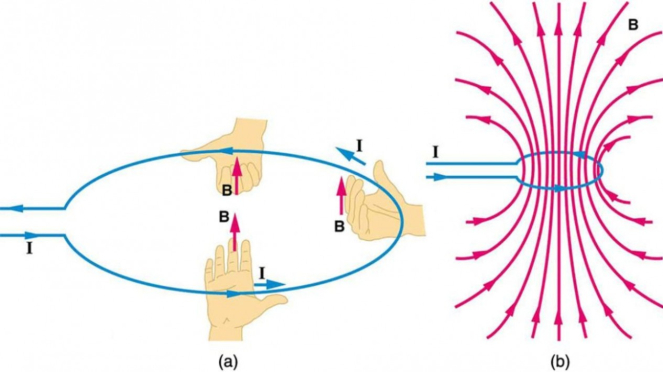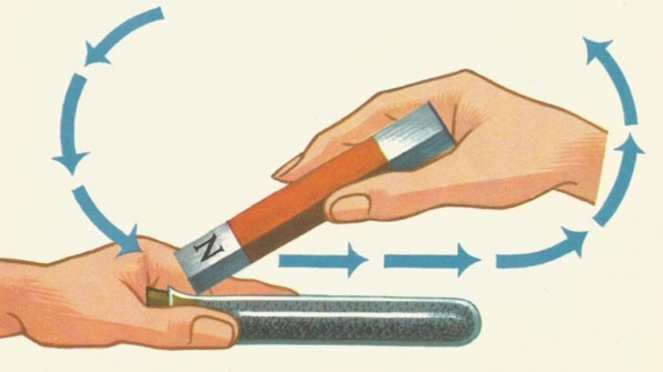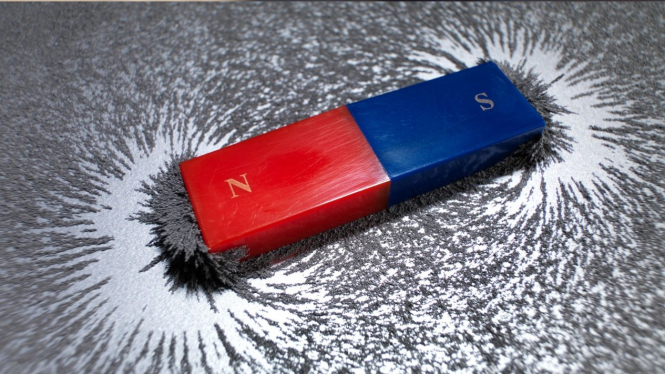LIVE Techno – How to make magnet You can do it yourself with simple tools and maybe you can find it at home. This article will specifically discuss how to easily make magnets for school assignments.
However, before discussing how to make magnets, it helps us to know in advance the properties of magnets so that an understanding of magnets can be better understood.
Sand powder containing magnets sticks to permanent magnets
Photo :
- National Geographic Society
–
–
–
Excerpted from the book Basic Physics, Series: Electricity Direct Current and Magnetism by Siswanto et al. In a magnet, there are two opposite poles, namely the North pole and the South pole. If a magnet is cut into small pieces, the North and South poles will remain.
Magnetic properties include:
1. Not all objects can be attracted by magnets, so magnets can only attract certain objects around them.
2. Magnets have a force that can penetrate objects, which if the magnetic force is large then the magnetic force can penetrate thick objects.
3. If there are two magnets that have different poles, and are brought close to each other then they will attract each other.
4. When poles of the same type are brought close to each other, they will repel each other
5. The magnetic field will form a magnetic force, which when an object is brought close to a magnet, the magnetic force caused by the magnet will be greater and vice versa.
6. If a magnet continuously falls and burns, then the magnetic properties can be reduced and even lost.
According to the book Easy to Master Physics for Junior High School Class 3 compiled by the Editor of Kawan Pustaka, there are two kinds of magnets, namely natural magnets and artificial magnets. Natural magnets are formed naturally without human intervention, such as earth magnets and magnesian stones.
Meanwhile, artificial magnets are magnets made by humans intentionally from pure steel or iron. Magnets of this type can also be made of alloy materials such as steel alloys with nickel or alloys between aluminum, cobalt, and nickel.
Well, here is a simple way to make a magnet that you can try at home or at school
3 easy ways to make your own magnets
1. How to make a magnet with Electromagnetics
Electromagnetic induction is the principle that an electric current can produce a magnetic field, and a magnetic field can produce an electric current. Reported from Live ScienceIf a current flows through a coiled wire, a magnetic field will arise around it according to the right hand rule.
 –
–
a. A flowing wire that carries an electric current in one direction b. magnetic field in wire
–
–
The easiest way to make an electromagnet is with a battery, steel nails, tape and wire. Wrap the steel nail with the wire in a circle, then connect the wire to the ends of the battery and cover it with tape.
If it is, the nail that is wrapped around it will conduct an electric current so that the nail will turn into a magnet and can attract other objects according to the nature of the magnet.
2. How to make a magnet by rubbing
The second way to make a magnet is to rub a permanent magnet on an object ferromagnetic repeatedly and unidirectionally.
Ferromagnetic materials are materials that have a permanent magnetic moment so that they can be attracted by a magnet. Examples of ferromagnetic materials are iron, cobalt, nickel, and steel.
 –
–
Rubbing permanent magnets with ferromagnetic materials
–
–
To make it, you can hold a permanent magnet and rub the surface of the magnet on an iron rod. Do the same for about 3 to 5 minutes.
Then bring the iron that has been rubbed against a needle or any object that can be attracted by a magnet, if the needle can be pulled, it means that the iron has become magnetic.
3. How to make a magnet by Induction
Magnetic induction is the approach of a ferromagnetic material (iron, cobalt, nickel, or steel) with a permanent magnet without the need for contact. The permanent magnetic field will align the magnetic moments in the iron so that the iron becomes a magnet.
–


